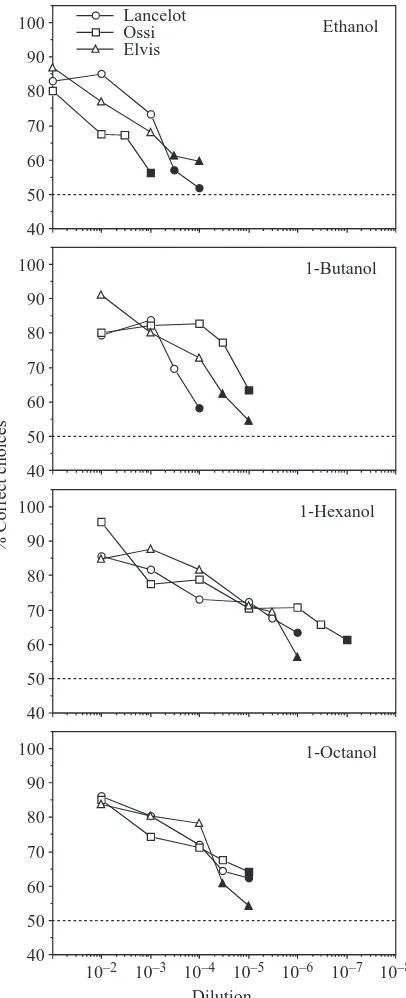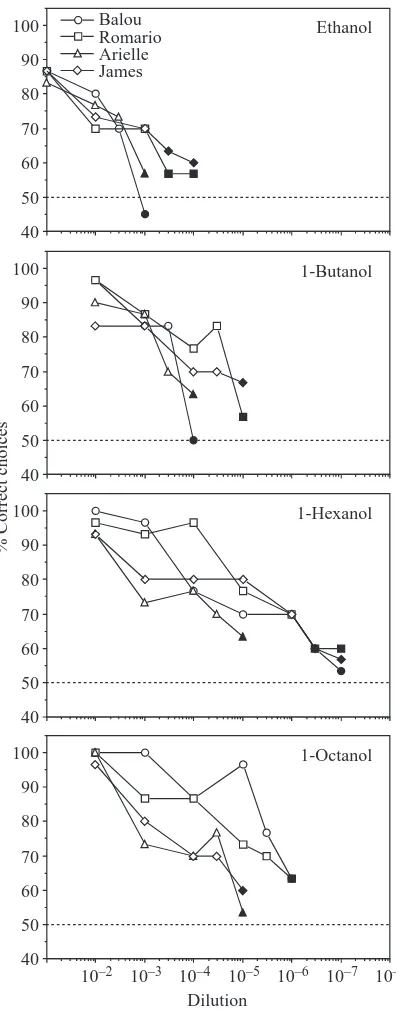Olfactory sensitivity for aliphatic alcohols in squirrel monkeys and pigtail macaques
Full text
Figure




Related documents
This is the common form of artificial lighting in our society, with two main families of devices: incandescent lamps, with light given by a filament heated by
A similar staining pattern was seen in vegetative cells overexpressing the CupB protein (Fig. 6A, panel d) but not in cells overexpressing the truncated CupA protein (data not
Background: This paper examined the political and social implications of the Compen- dium de epidemia prescription written by the Masters of the Faculty of Medicine of
Our study illustrates the feasibility of gene therapy for pendrin-related hearing loss, suggests differences in the pendrin requirement for the cochlea and the
When restricting, the production quotas or base acreages (table 7) for wheat, feed grains, cotton and soybeans also have nonzero prices. These quota, or base
Introduction of an amino group to primary or secondary aliphatic and cyclic alcohols strongly reduced the relative activity of the enzyme and decreased substrate affinity
Extending this pilot study (Wages, 2018), in the current study, I examined how one rural school district coordinated its arts program using different levels of leadership and I
Дефіцит вітаміну D 3 (нижче 50 нМ) веде до стійкого порушення мінерального (зни- ження рівня кальцію, вторинне підвищення рівня паратгормону), вуглеводного (підви-


